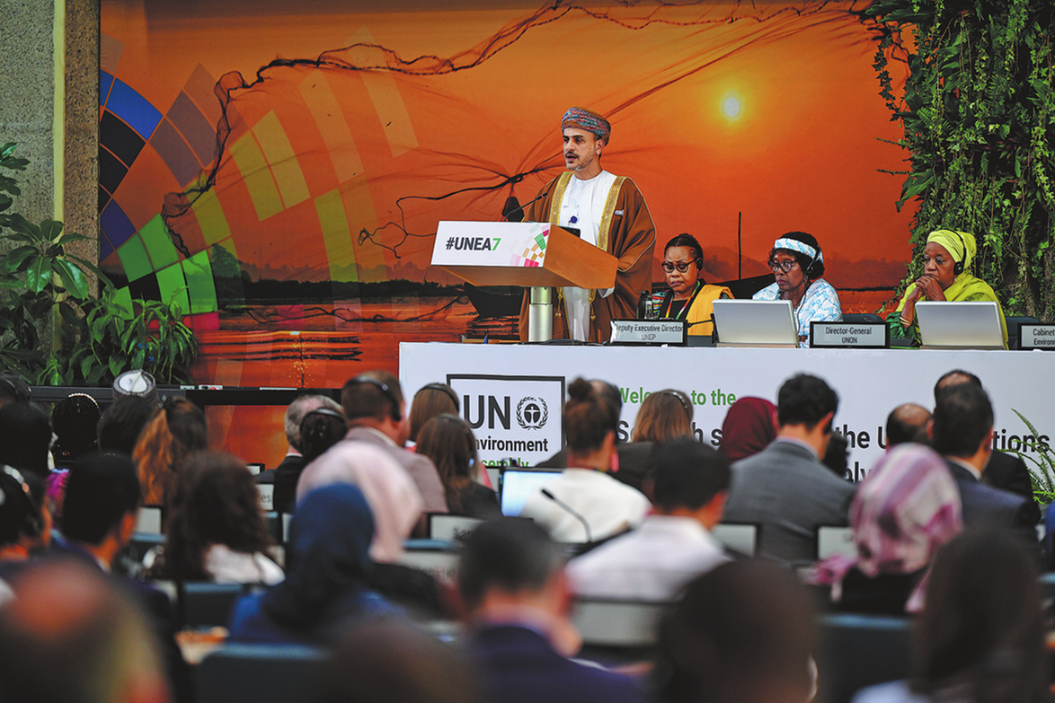Economic corridor brightens Pakistan's economic future
By Maarij Farooq | China Daily Global | Updated: 2024-01-25 09:20

The China-Pakistan Economic Corridor, a key component of the China-proposed Belt and Road Initiative, represents a monumental partnership between Pakistan and China that aims to drive economic growth and regional connectivity.
As we look toward the second phase of this ambitious project, it is important to understand its significance and the potential it holds for Pakistan's future.
The first phase of the CPEC stands as a transformative period in Pakistan's economic history, and it has had a profound impact on the country's infrastructure and energy landscape. This phase was marked by a series of ambitious projects, each playing a crucial role in addressing some of Pakistan's most pressing development challenges.
One of the most significant achievements of the first phase was the substantial improvement in Pakistan's energy sector. Before the CPEC, Pakistan faced a severe energy crisis, with frequent power outages severely affecting industrial output as well as daily life. The first phase of the CPEC focused heavily on energy projects, including the construction of coal, wind, solar and hydroelectric power plants. These projects collectively added thousands of megawatts to Pakistan's national grid, substantially alleviating the energy shortfall and contributing to economic stability and growth.
Infrastructure development was another key focus of the economic corridor's first phase. The construction and upgrading of highways and other roads across Pakistan, including the Karakoram Highway, significantly enhanced connectivity. This improved infrastructure not only facilitated domestic trade and mobility, but also positioned Pakistan as a critical transit route for regional trade, particularly between China and the Middle East.
Among the highlights, the first phase saw the development of Gwadar Port, a strategically located deep-sea port in the Arabian Sea. Gwadar Port, whose development has been central to the CPEC, is envisaged as a hub for regional trade and connectivity. The port has the potential to transform Pakistan into a major maritime trade center, boosting its economy and its strategic importance in the region.
The first phase of the CPEC also laid the groundwork for more extensive economic cooperation between Pakistan and China. It established a framework for bilateral trade and investment, setting the stage for the more diversified and comprehensive developments planned for the second phase. The successful completion of these foundational projects in the first phase has not only bolstered Pakistan's confidence in the CPEC initiative, but has also showcased the potential of such large-scale bilateral cooperation in addressing developmental challenges.
Transitioning into the second phase, the CPEC is set to expand its focus. This phase aims to diversify the economic impact of the project by venturing into new sectors such as industrial development, agricultural modernization and socioeconomic projects. The establishment of special economic zones is particularly noteworthy, as these zones are expected to catalyze industrial growth, attract foreign investment and create job opportunities.
The potential benefits for Pakistan in this phase are vast. Economic growth is expected to surge with the development of industries and the creation of new job opportunities. Technological advancements and skill development initiatives are likely to enhance the workforce's capabilities, fostering a more dynamic and competitive economy. Moreover, strengthening key sectors such as agriculture, manufacturing and services will have a ripple effect across the economy, enhancing overall productivity and efficiency.
China's role in this phase remains pivotal, especially as Chinese leaders are stressing high-quality Belt and Road development, closer links in interconnections and better cultural exchanges. As a strategic partner, China is not only investing financially but also sharing technological expertise and industrial knowledge.
However, the path forward is not devoid of challenges. Security concerns, political stability and overcoming bureaucratic hurdles are key areas that need attention. Efficient implementation and coordination among various stakeholders are crucial to realize the full potential of these projects.
It is certain that the second phase of the China-Pakistan Economic Corridor will also stand as a transformative chapter in Pakistan's development journey. With a broader scope and deeper impact, it promises to propel Pakistan toward a future of sustainable and inclusive growth. The strategic alliance with China underpins this journey, signaling a shared vision of prosperity and development, not just for both countries but for the region as a whole.
The writer is deputy editor-in-chief at Pakistan Economic Net and Daily ITTEHAD Media Group.
























